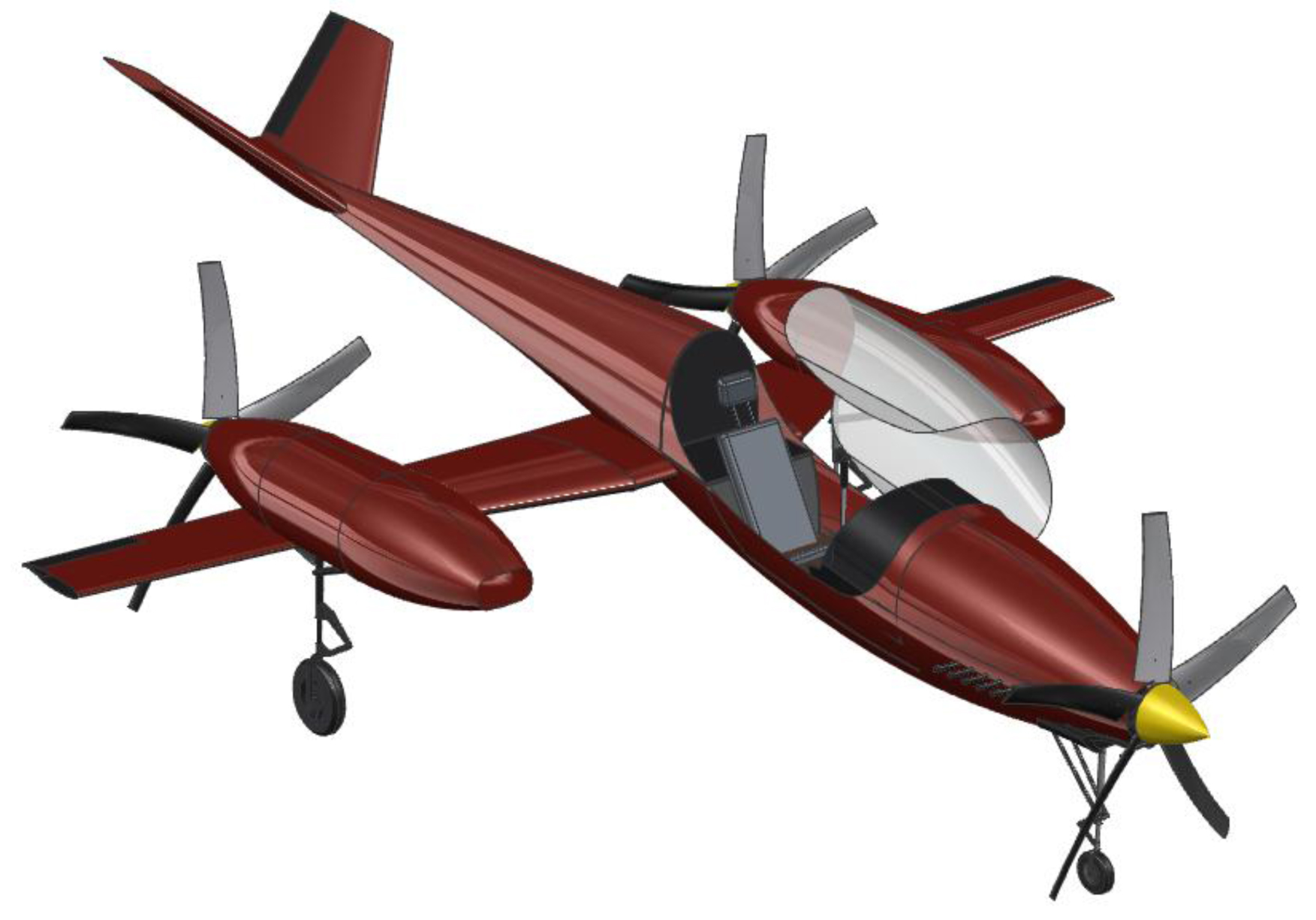Student’s aircraft design wins top honor
Cratus has three BMW engines for power and for safety; if one goes offline, the others could make a landing. It’s also got high bank angles designed in, for better visibility for the pilot and to fight the risk of tip stall. It’s a design that’s all about maintaining control.

Samantha Schueler's winning preliminary aircraft design.
Samantha Schueler is the brains behind Cratus, and she knows her way around a hangar.
The speculative design, somewhat based on a P51 Mustang, won first place in a prestigious American Institute of Aeronautics and Astronautics aircraft design competition last month. Kansas University students swept the contest. Jorrit Vervoordeldonk, co-advised by KU faculty and those at Technical University of Delft in the Netherlands, came in second with a plane called the Renosaur; Alexander Lopez, a 2012 KU grad from Overland Park, came in third with “Atlas.”
Schueler in particular has a personal connection with preliminary design. Her dad, Daryl Schueler, was also a KU aerospace engineering graduate. He raised her around airplanes, always challenging her to get her interest piqued and her engineering senses tuned.
“He was probably only telling me the interesting stuff so I’d want to know more,” she said. “But I did — I always wanted to learn more.”
Daryl died in an FAA safety test flight over Missouri in 1995. Samantha’s dream career was set.

From left: Samantha Schueler, Ron Barrett-Gonzalez and Alexander Lopez
She graduated from Free State High School in 2008 and KU in 2012. She’s now a graduate student there, with an internship with Boeing under her belt and a hope to go back to the company — particularly to its Washington base — after getting her master’s.
Ron Barrett-Gonzalez, an associate professor of aerospace engineering, advised Schueler over the yearlong design process. He said that she’s “smart and knows her history,” calling the Cratus racing design innovative but also influenced by knowledge of World War II design and an innovation called the Meredith effect.
Barrett-Gonzalez spoke of Schueler’s natural gift for aircraft design, her legacy of engineering prowess, calling her “clearly brilliant.” But all three students deserve praise, he said.
“This kind of whole-aircraft design is very much like the decathlon,” he said. “But they were all stronger than everyone else in conglomeration, so highly skilled that they just smoked the competition.”






